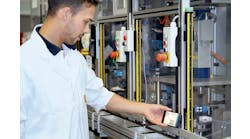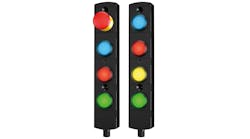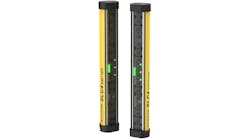Catie Hillard, CSME, is client success manager, machinery safety, at AE Solutions, a consulting company that helps manufacturing facilities achieve safe machine operation through risk assessment, application of the hierarchy of control and sensible safeguard design. Hillard is a degreed chemical engineer with 10 years of experience in program management, project management and compliance in air quality, facility design, process and machinery safety. A certified machinery safety expert (CMSE), Hillard has experience implementing machinery safety standards compliance programs including risk assessment, safeguard selection, safeguard design and specification, installation and testing of safety equipment for original equipment manufacturers (OEMs) of custom machinery.
Tell us about your company’s state-of-the-art safety offerings.
Catie Hillard, CSME, client success manager, machinery safety, AE Solutions: We offer machinery guarding assessments, risk assessments and consulting to achieve conformity with machinery safety industry consensus standards, in support of achieving OSHA requirements.
What have been the biggest improvements in safety over the past five years?
Catie Hillard, CSME, client success manager, machinery safety, AE Solutions: There has been a general shift in industry toward conformity with machinery safety standards, which has been driven by companies that recognize the value of safety in the workplace. The development of safety-equipment technologies such as area scanners, safety cameras and safety-related software applications has been ignited by an unprecedented level of industrial automation, allowing manufacturers to become safer and more efficient than ever before.
What’s the most innovative or efficient safety application you’ve ever seen or been involved with?
Catie Hillard, CSME, client success manager, machinery safety, AE Solutions: Safety equipment such as area scanners can be coupled with software that can increase plant efficiency by safely allowing the automatic reset of the robot system during collaborative use. Prior to the scanner application, the reset could not safely be performed automatically. This can save a tremendous amount of time and increase efficiency for the plant.
Can you explain how software development has changed safety component design and production?
Catie Hillard, CSME, client success manager, machinery safety, AE Solutions: Safety-rated software development has allowed many more applications of safety components and led to the development of new safety equipment such as cameras. With safety-rated software, cameras can be used to monitor human interaction with machinery and safely and automatically control the equipment. This allows for much safer and more efficient interactions. Safety-rated safeguard functions such as safe limited force and safe limited speed have been developed to increase the safety of interacting with robots. Many more robotic applications have been able to be developed using these technologies.
What future innovations will impact safety in discrete-manufacturing operations?
Catie Hillard, CSME, client success manager, machinery safety, AE Solutions: Certainly, the safety-rated cameras will be huge. There are infinite horizons in the safety-rated software applications, and I’m looking forward to following along. I’d love to see safety-rated infrared (IR) cameras make a showing, but I’m not sure if the technology will get there. Artificial intelligence (AI) will undoubtedly be integrated into safety-rated software, the question of timing is still open-ended.






